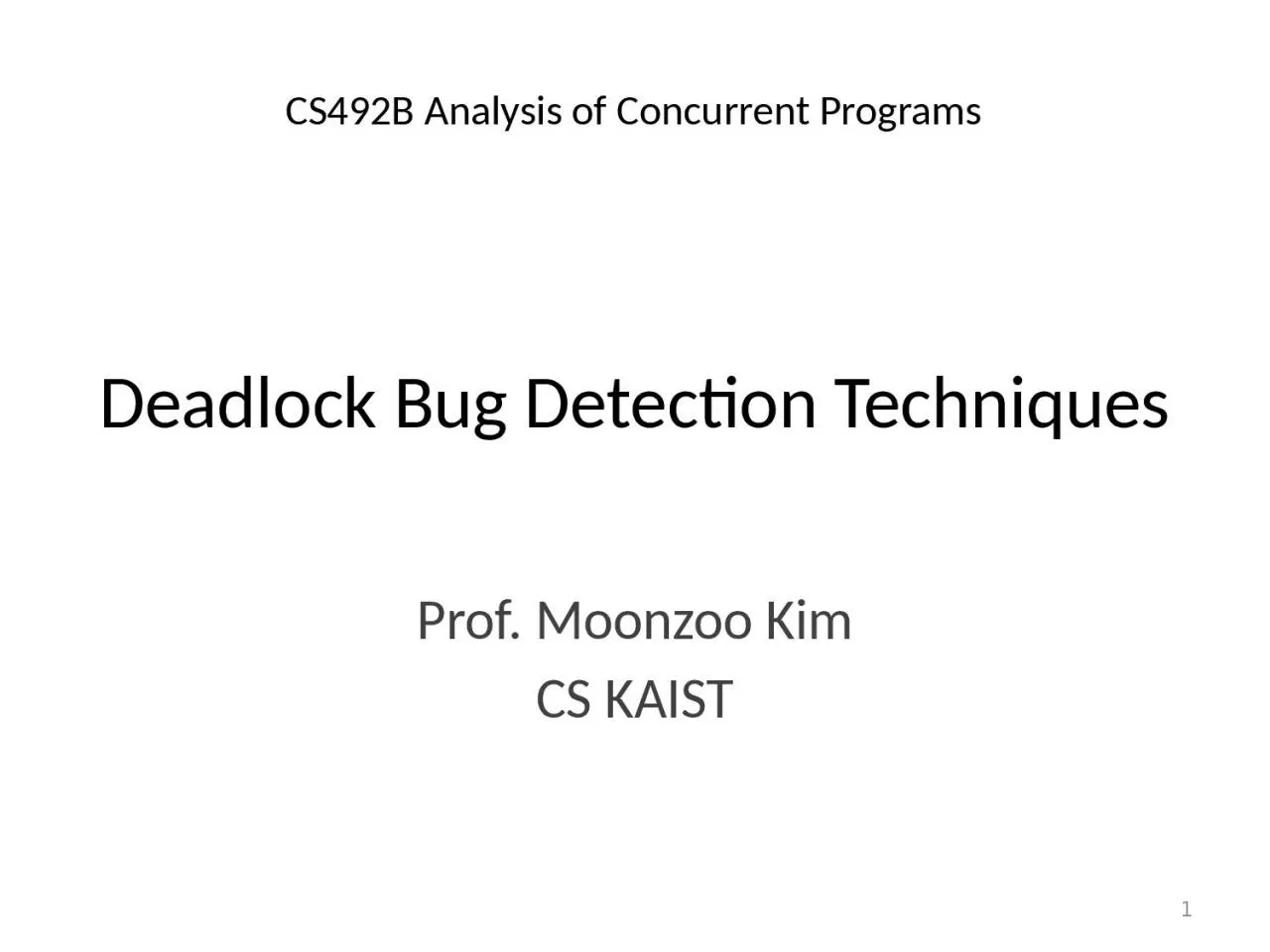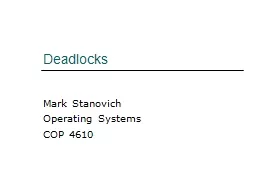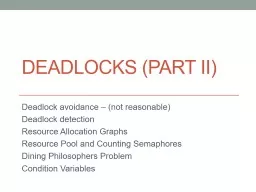PPT-Deadlock Bug Detection Techniques
Author : freya | Published Date : 2024-01-13
Prof Moonzoo Kim CS KAIST CS492B Analysis of Concurrent Programs 1 Bug Detection Techniques for Concurrent Programs 1000000 LOC lt 1001000 LOC Precision rstest
Presentation Embed Code
Download Presentation
Download Presentation The PPT/PDF document "Deadlock Bug Detection Techniques" is the property of its rightful owner. Permission is granted to download and print the materials on this website for personal, non-commercial use only, and to display it on your personal computer provided you do not modify the materials and that you retain all copyright notices contained in the materials. By downloading content from our website, you accept the terms of this agreement.
Deadlock Bug Detection Techniques: Transcript
Download Rules Of Document
"Deadlock Bug Detection Techniques"The content belongs to its owner. You may download and print it for personal use, without modification, and keep all copyright notices. By downloading, you agree to these terms.
Related Documents













